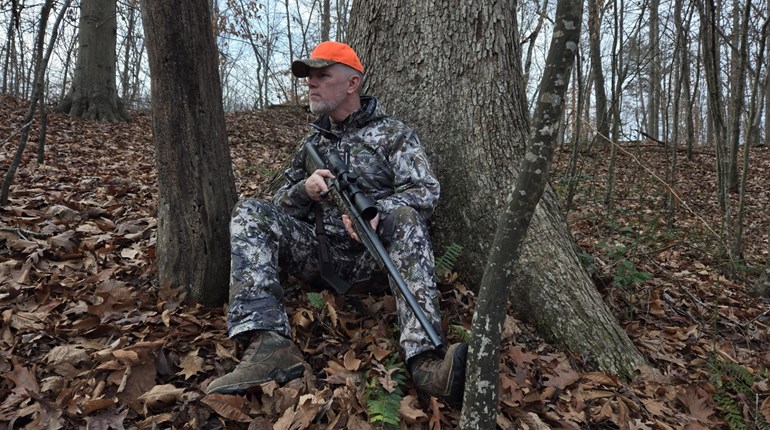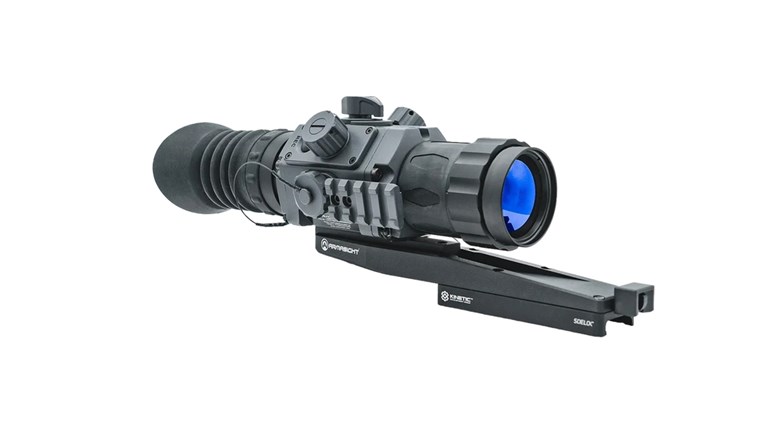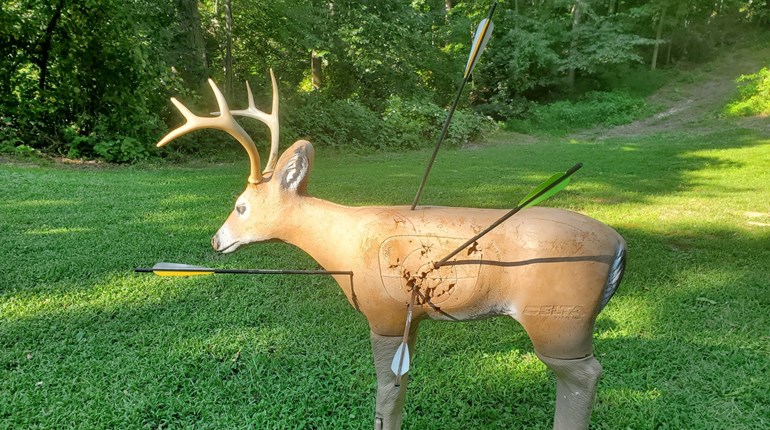
You took the shot. You know it was a good shot, but the animal ran off ... and now it's getting dark. That's a very common scenario, and it's one that used to sometimes result in hunters losing their game animal for good. That's something we want to avoid at all costs as hunters. Why does it happen? Well, big-game animals are stronger than you know, and deer in particular are well-known to run for up to half a mile even after being fatally struck by a bullet or arrow. What's more, the best chance a hunter has for taking an animal like deer is during legal shooting light at dawn and dusk. Long story short, that's why we call it "hunting" and not "shooting," because there are no guarantees.
Time was, after dark your choices included flashlights and (where legal) tracking dogs. Those times are over; darkness can be overcome! But when in the woods or heavy brush, it is a whole different ball game that the responsible hunter must play if he or she is to win. To help do that with some high-tech gear, here is what my wife and I use when helping each other locate downed game.
The Shot Looks Good
After the shot, here are some tips that work for us. In general, always sit tight, do not push it if the animal is out of sight and observe where it was headed. Watching through binoculars at this time can also be helpful. Also, analyze how the animal ran since that is important. As an example, when a deer is hit, it usually has its tail down as it runs. I have seen deer gut shot and with the shot, their back could appear to immediately move upward.
Also, move as quietly as possible to the side of the animal's escape route (do not disturb any sign). It may be just out of sight, bedded down where it may simply expire if not pushed. When we find blood, we tie a small orange ribbon high on a limb at that spot so we can look back at what are now reference points.
Communication
We carry cell phones to be used only when someone needs help or to check in with our hunting partner at specific times. For another purpose, you can also install an app that allows you to use it as a GPS. With that, your phone can get you back to your vehicle and keep one from getting lost due to following game. In some areas there, is no phone signal so consider this option: a small two-way radio for communication if someone in our hunting party needs help.
Hand-Held GPS
Garmin and others have various models of GPS devices depending on what options you need. What I have used for years is a basic model, the Bushnell Back Track D-Tour. I set it at my vehicle or when I leave a hunting camp on foot, turn it off and hunt. When it is time to head back, I will turn it on and it will guide me within a foot or two of where I first set it.
Tracking and Looking for Blood
What night vision and especially thermal imaging equipment does today is to speed up the process to locate that animal. Thermal imaging is also helpful when looking for a blood trail, which is usually still warm. A big plus is when we scan for downed game, at times we have picked up on other animals in the area. Nice to know what else is there and not moving!
Night vision and thermal imaging go together. For years I have taken with me a Bushnell 1.5x54 night vision unit, which I leave in my vehicle. It amplifies existing light, which gives the hunter an edge in finding that downed animal in the dark. This is helpful since no one wants to waste game! It even helps make things easier and safer to move ourselves and our game out of the woods.
A few years back, Leupold came out with its LTO-QUEST HD thermal imaging camera and flashlight, which is small and light enough to put into your jacket pocket. Its detection range for body heat is a remarkable 750 yards, which covers a lot of area. Remember, that expired animal still retains body heat for quite a while, which is how this device works. If I point it into the woods from my porch, I will pick up on whitetail where before all I saw was darkness.
Light It Up
Of course, tech or no, you still need a good flashlight. Even if it is just light enough to see in the morning or there is a full moon with enough light to see a trail to your stand, I turn on my light. The reason for doing that is safety! I am not worried about game seeing me but of some unethical shooter who sees an image in the low light and fires. I am familiar with two such incidents over the years and what a tragedy.
For a hands free light, attached to the brim of my hat is an E1L SureFire Outdoorsman which is small, light and bright with its 45-lumen output. Another hands-free option is an Olight H15S Wave LED Sensor Headlamp. This produces brightness levels from 15 to 250 lumens of light. For another option for a hand-held light, the Coast 455 twist focus 1400 lumens LED light is great. For a small, easy to carry and unique light I have with me at most times, the SureFire PLR Stiletto Multi-Output Rechargeable Pocket LED Flashlight. Its lumen range is from a low of 5, a medium 250, to a high of 650. It also has a wide flood beam which is good to have when looking for downed game in the dark. To charge it, simply plug it into your USP port.
The "old ways" of hunting and tracking still work, and we shouldn't forget them ... but adding high-tech gear to your basic skills can only help to recover game more rapidly, and that can only make your hunting experience more ethical. Safe Hunting!





































